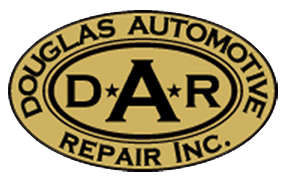Everyone knows how to wash and wax a car. Or, do they? We tend to get rusty in the off-season, so here are some spring training tips.
Keep cool
It is best to wash your car when the car’s surface is cool. A cool morning is ideal, but if you are not a morning person, simply find a shady spot to avoid water-spotting the car before you get a chance to dry it.
A cloudy or overcast day is a better time to wash, as long as rain isn’t in the forecast. Drops of water, especially hard water or soapy water, dry quickly under the sun leaving spots that may be hard to remove.
Washing wheels and tires
Some folks like to leave the wheels and tires for last, but there is an advantage to cleaning them first. Any cleaner overspray washes off later when you clean the body and the wheels and tires will have some time to dry.
Apply the wheel cleaner to one wheel and allow it to soak for a moment. If applied to all the wheels you risk it drying before you get to the third or fourth wheel. Before scrubbing wheel number one, apply cleaner to wheel number two, and so on.
Scrub the wheels using a dedicated wheel cleaning brush. Use a lug nut brush that doubles to clean the lug nuts and then the surrounding holes.
Rinse with a strong stream of water making sure to remove all cleaner, especially from the lug nut holes where it tends to puddle.
Washing the body
Use only car washing concentrates by measuring out the specified amount into a bucket of water to prevent getting a bucket of bubbles. Never use dish soap or other detergents, as they will strip off the wax.
Use 2 buckets, one to wash and the other to rinse your wash mitt. Always rinse your mitt in the second, clear water bucket before dipping back into the soap solution.
Use a lamb’s wool or synthetic wash mitt. Some people prefer a natural sea sponge. Both are good at trapping and holding dirt until rinsed. However, a sponge may hold dirt too well and carry it back to your work surface unless you’re careful.
Rinse the entire vehicle to wash away as much loose dirt and soil as possible.
Start at the top (roof) and work your way down. Use a light, gently touch when washing; don’t scrub vigorously. If you are too aggressive, you can damage the paint.
Keep the body panels wet to avoid spotting. Use a gentle flow of water opposed to a strong stream or spray that often ricochets off the car. Fire hose style nozzles are popular and most have a shutoff to avoid wasting water. Look for rubber coated nozzles that won’t damage the car if they bump it.
Dry with an air blaster or leaf blower to get water out of crevices, etc. Then dry the surfaces by drawing a moist chamois across the panels. Spread the chamois out like a tablecloth then slowly draw it toward you. Alternatively, you could use a silicone squeegee specifically designed for cars. Finish by drying the vehicle with plenty of microfiber towels.
Polishing and waxing
Some people mistakenly think that the clear coat over the paint precludes the need for further protection. Not so. Clear coat is simply paint without pigment. Microscopic scratches and abrasions make the clear coat dull. Waxing fills those scratches and restores the shine.
The clear coat is only 2 mils (one mil is one thousandth of an inch) thick. That is about the thickness of a plastic bag supplied by most department stores. For comparison, freezer bags are about 1.75 mils thick.
There is confusion when it comes to polishes and waxes. Strictly speaking, polishes are abrasive and are used to remove swirls and other surface scratches. Waxes provide the final shine and protection from the elements.
When it comes to waxes, carnauba is the granddaddy and is still popular today. It comes from palm trees that grow in Brazil. It is good stuff.
Many detailers favor some kind of cleaner wax. Its one-step convenience saves time. These generally contain a chemical cleaner that helps the wax bond better to the vehicle.
Similar to washing, begin at the top and work down. Wax the horizontal surfaces then the vertical surfaces above the beltline than below the beltline. Be sure to get behind the bumpers and inside the doorjambs and fuel filler door.
The black stuff
Many vehicles have more black surfaces than just the tire sidewalls. In addition, many products will restore those bumpers, mirror housings and such to a factory fresh low shine. Use it carefully to avoid getting any product on the body. Despite coming in spray cans, it is best to apply the product to the cloth then wipe it on.
Spray or wipe tire gloss on the sidewalls, but be careful not to get overspray on the wheels or brake rotors. If the vehicle has plastic fender liners, spray them as well for that extra touch.
Treat all of the door and trunk gaskets with silicone lubricant. This not only looks good, it helps protect the rubber. It also helps prevent the doors from freezing shut in the winter.
Douglas Automotive wishes you Happy Washing!
This entry was posted in Car Wash, Spring and tagged Car Wash, Spring on .

